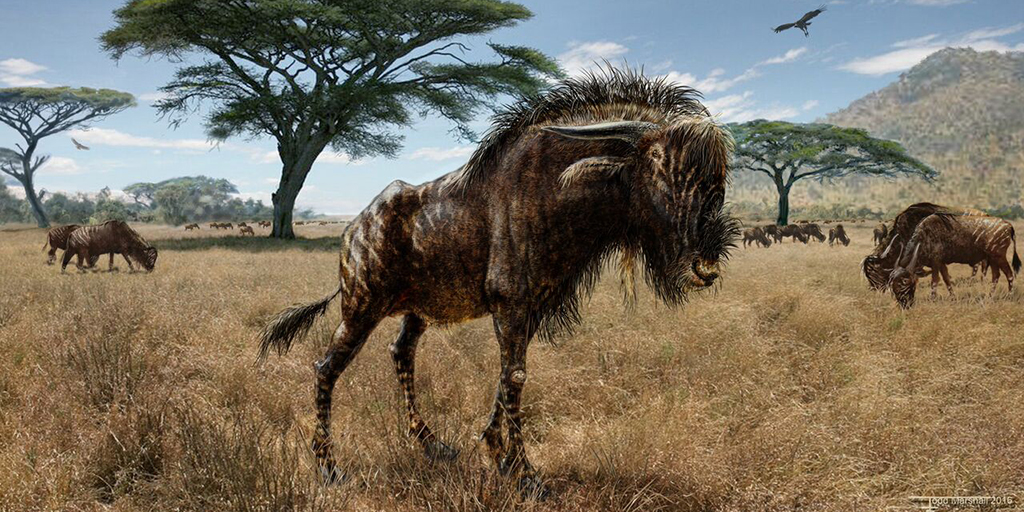Baylor professor uncovers wildebeest-like species with unique adaptation

For the last 50,000 years, ancient creatures with a unique nose have been buried in the soil of Kenya’s Rusinga Island. These wildebeest-like animals provide insight into how different species can adapt and evolve in similar ways — but their secrets were kept hidden until they were recently uncovered by a Baylor professor and his research team.
Known as Rusingoryx atopocranian, these animals resembled today’s wildebeests that can be found across Africa, but with one distinct difference; the Rusingoryx featured a trumpet-like nasal dome found only on one other species: hadrosaur dinosaurs. The Rusingoryx skeletons were discovered by a team of researchers co-directed by Dr. Daniel Peppe, a Baylor geosciences associate professor, while digging on Rusinga Island in Lake Victoria along the Kenya/Uganda border.
The finding is significant because, while the nasal domes are very similar between the two species, they are not closely related and lived in vastly different time periods. It’s an example of “convergent evolution,” when different animals, independently of each other, evolve similar features for similar needs.
The Rusingoryx (depicted above by artist Todd Marshall) and hadrosaurs share a long, twisting nasal cavity which, Peppe and his team hypothesize, was used for vocalization. They believe the shepherd’s rod-shaped nasal passage allowed the Rusingoryx atopocranian to communicate with its herd to warn them of impending predators. (Atopocranian roughly translates to “strange skull.”) Peppe’s best guess is that the noises emitted sounded similar to the vuvuzelas associated with South African soccer fans, and may have even been emitted at a low enough register that predators couldn’t hear them.
The Baylor professor and his team were studying ancient human behavioral evolution when they made their unexpected discovery. In addition to revealing more about convergent evolution, the finding also provides more information about how humans moved on the ancient landscape. Several of the skeletons found had cut marks left by humans, indicating that humans may have hunted the Rusingoryx and chased them into a river system, where they drowned.
Going forward, Peppe’s team will study further factors that led to these animals growing their “strange skull” adaptation and examine how the once common Rusingoryx went extinct.
Sic ’em, Dr. Daniel Peppe!

